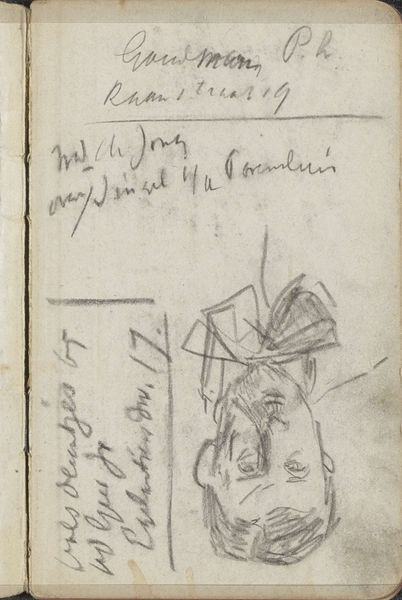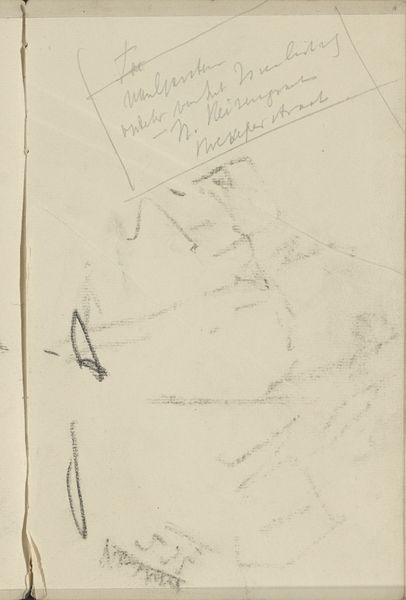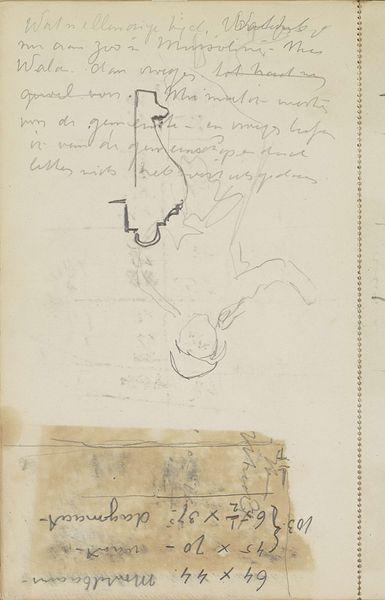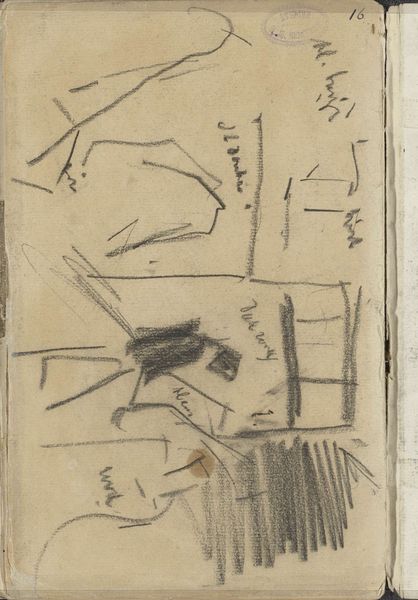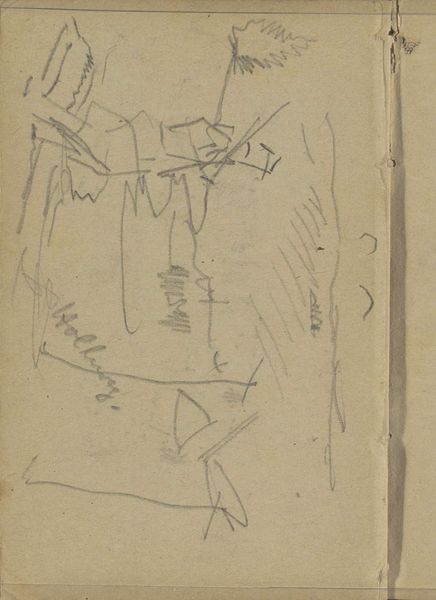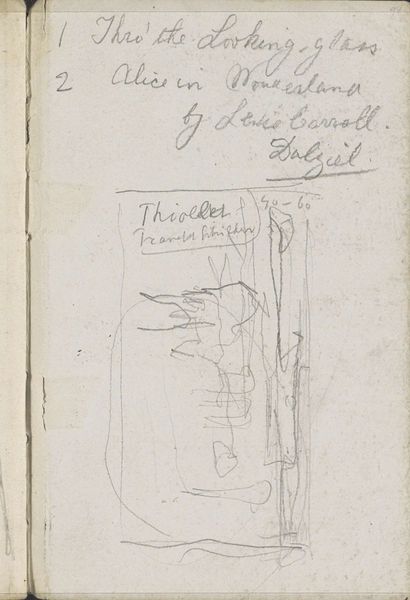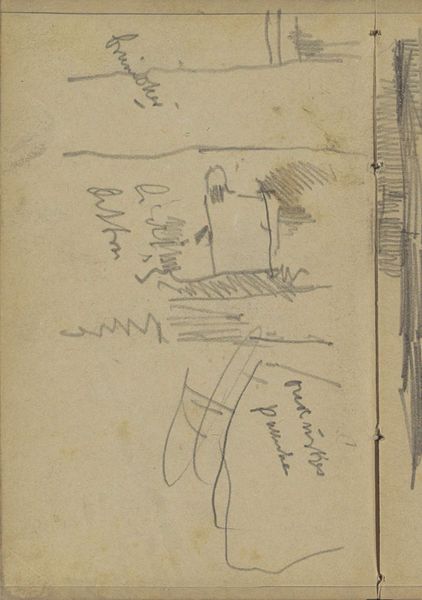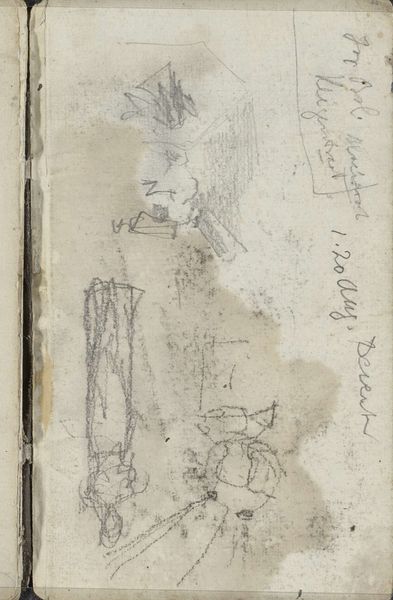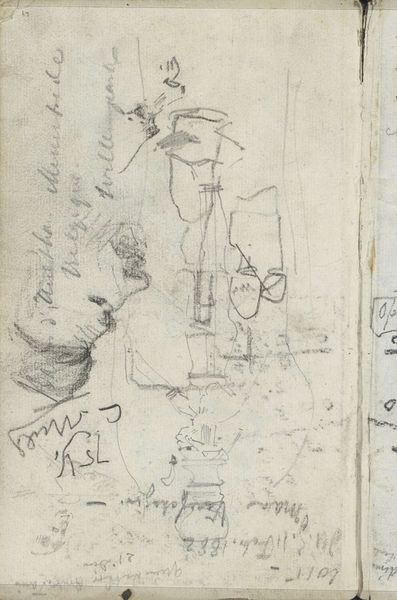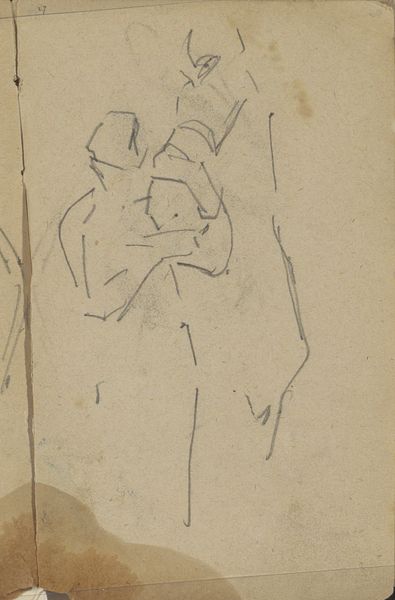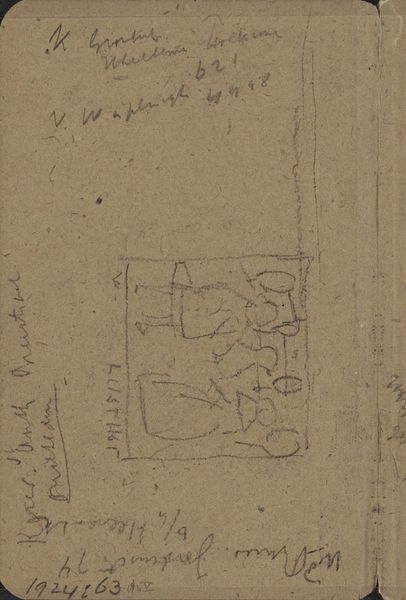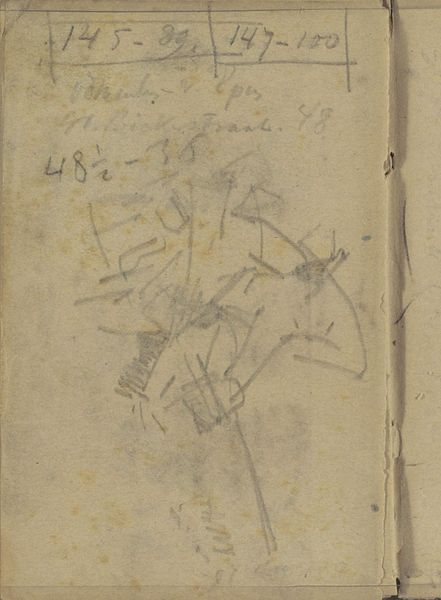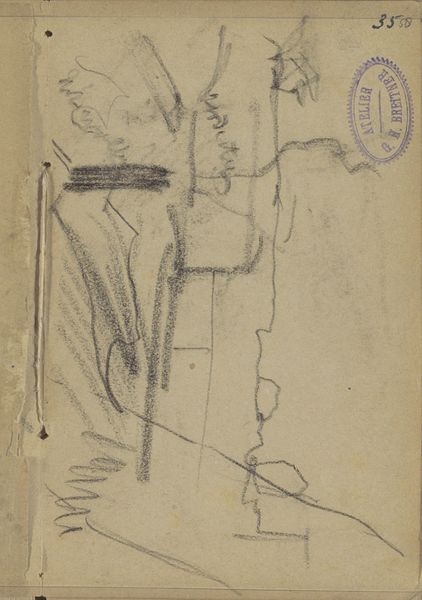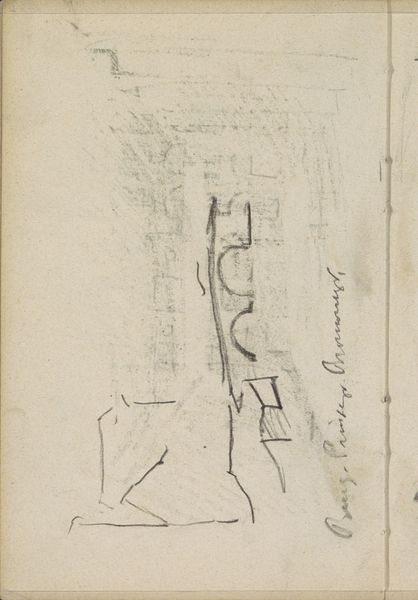
drawing, paper, pencil, graphite
#
portrait
#
drawing
#
impressionism
#
figuration
#
paper
#
pencil
#
graphite
Copyright: Rijks Museum: Open Domain
Curator: Breitner’s “Figuurstudies,” housed here at the Rijksmuseum, offers us a glimpse into the artist’s process between 1887 and 1891. Graphite and pencil dance across paper in this impressionistic drawing. Editor: Immediately, I'm struck by the dynamism captured through what feels like a very rapid, almost frantic application of line. It’s more about gesture than form, isn’t it? Curator: Precisely. Breitner, embedded in the cultural and artistic milieu of Amsterdam, was interested in capturing the immediacy of modern life, of which the figure was an integral part. His sketchbooks became arenas to develop these fleeting impressions. Editor: Look at the composition – the subjects almost blend with the written notes, which add another textural element on top of the sketched human forms. How might those inscriptions shape our view of the subjects or of Breitner's creative choices? Curator: The incorporation of these textual fragments allows us access to the socio-political conditions that underscore the creation and initial audience. Breitner, a proponent of ‘het volk’ and heavily influenced by social realism, positions himself as the observant, albeit participating, chronicler of urban existence. Editor: I notice a great sensitivity in the pressure applied with the pencil; look, it seems the artist at times uses a thinner, finer application of lines. Perhaps the differing treatment speaks to the subject's expression? The shading, as basic as it is, really creates a great range. Curator: It absolutely does! Furthermore, you’re witnessing his commitment to portraying a version of reality he perceived as neglected or unacknowledged by the Dutch artistic canon. The formal treatment directly challenges prevailing conventions of academic representation. Editor: Fascinating. So this isn’t merely an exercise in capturing form; the choice of materials and how they’re handled is intrinsically connected to its place within Amsterdam’s social narrative. Curator: Correct. His stylistic choices aren't independent; they signal his rebellion against the established order in the 1880s. Editor: The more you unveil, the more palpable I sense that context radiating from these gestural forms. It's been rewarding to peel back those layers! Curator: Agreed! By merging aesthetics and his radical ideals, “Figuurstudies” evolves past technical exercises and acts as an index for social observation.
Comments
No comments
Be the first to comment and join the conversation on the ultimate creative platform.
